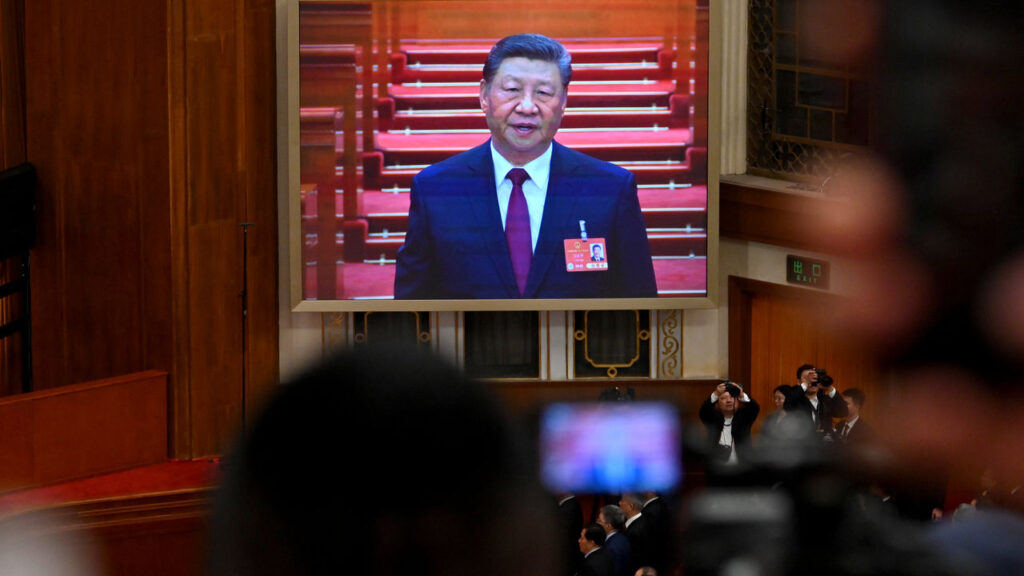The ongoing trade war between the United States and China has rapidly intensified, marking a significant escalation in economic tensions between the two superpowers. On April 8th, just hours after President Donald Trump made a series of alarming threats regarding tariffs, Chinese officials declared their commitment to “fight to the end.” This statement underscored China’s determination to protect its economic interests amid increasing pressure from the U.S. administration. Initially, Trump had proposed imposing tariffs of 34% on a wide array of Chinese imports. However, escalating his rhetoric, he vowed to increase these tariffs by an additional 50% if China did not withdraw its own retaliatory measures, which were also set at 34%.
Adding to the complexity of the situation, financial analysts from Goldman Sachs highlighted the potential implications of these escalating tariffs. They estimate that, if implemented, the United States’ tariff rate on Chinese goods could surge to an alarming 110% by April 9th, coinciding with the scheduled enforcement of the new tariffs. Such a dramatic increase would not only exacerbate the trade rift but also potentially lead to significant repercussions for both economies and global markets. Meanwhile, on the other side of the Pacific, China’s tariffs on American exports could rise to around 70%, further complicating international trade dynamics.
As the situation develops, both nations face mounting pressure from various sectors to resolve their differences amicably. The risk of a prolonged trade war poses threats to global economic stability, as tariffs increase costs for consumers and businesses alike. For many industries, the prospect of higher tariffs signals a challenging road ahead. Analysts fear that prolonged import duties can disrupt supply chains, increase inflation, and foster uncertainty in investment climates. The effects are likely to ripple outwards, impacting economies well beyond the U.S. and China.
Moreover, the political ramifications of these tariff hikes are significant. Domestic industries that rely heavily on exports to either country are now caught in the crossfire, leading to calls for intervention and compromise from policymakers. In the U.S., agricultural sectors like soybeans and corn have already felt the sting of retaliatory tariffs from China, leading to reduced sales and increased financial strain. Conversely, Chinese manufacturers reliant on American technology and products face similar challenges from imposed tariffs, pushing them to seek alternative suppliers and markets.
Amidst the chaos, there are voices advocating for diplomacy over economic warfare. Many economists argue that open dialogue and negotiations could yield more favorable outcomes than an aggressive tariff strategy. The potential for cooperative trade agreements and market access should not be overlooked, as these options could lead to a reduction in tariffs and a return to a more balanced trade relationship. Some experts emphasize that embracing collaboration over confrontation might not only benefit U.S.-China relations but could also contribute to a more stable global economic environment.
As the trade war continues to unfold, it becomes increasingly clear that the path ahead remains fraught with uncertainty. Both nations stand at a pivotal crossroads. China’s commitment to retaliate against any further U.S. tariff increases reflects a broader strategy to assert its economic sovereignty in the face of external pressures. Likewise, the Trump administration’s bold moves underscore a willingness to push for what it sees as necessary reforms in trade practices, even at the risk of igniting a full-blown economic conflict.
In conclusion, the rapidly changing landscape of U.S.-China trade relations is emblematic of the larger geopolitical tensions that are shaping the 21st century. Each country must navigate a delicate balance between protecting national interests and fostering sustainable international trade. As the deadline for increased tariffs approaches, the global community watches closely, hoping for a resolution that averts further escalation and promotes long-term economic stability.









